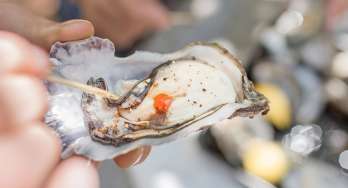


Join thousands of fellow campervan travellers
Sign up for our Britz newsletter to receive inspirational travel content and awesome deals, and we'll send you a copy of our Ultimate RV guide!
Thanks
Please confirm subscription in your email.
Why do people go to Halls Gap Zoo?
Visitors come here for the chance to get close to the animals in a way that you simply can’t do at a regular zoo. At Halls Gap Zoo, you can buy feed at the gate and hand it to kangaroos and wallabies as they wander freely through the paddocks (no wonder this is consistently listed as one of the best family activities in Halls Gap!). For something more structured, the zoo offers animal encounters that let you meet dingoes, red pandas, meerkats, or giraffes, with keepers guiding the experience and answering questions along the way.
Another reason people love Halls Gap Zoo is its conservation work. The zoo plays a role in captive breeding programs in Victoria, helping to protect species like Tasmanian devils, endangered reptiles and migratory birds. Keeper talks explain how these programs work and why they matter, making them both fun and educational for the whole family.
And then there’s the setting itself: nestled against the Grampians, with open-air enclosures and mountain backdrops, the zoo feels more relaxed than a city attraction. Pair that with picnic areas and plenty of shade, and you’ve got one of the best family activities in Halls Gap. Best of all, because it’s so close to town, you can easily work the zoo into a bigger road trip. It’s a natural add-on to drives like the Great Ocean Road, the Adelaide to Melbourne journey, or a food-filled detour through Gippsland.
How long should I spend at Halls Gap Zoo?
A standard visit takes about 2–3 hours. That’s enough to walk the circuit, hand-feed kangaroos, check out most of the enclosures, and catch at least one animal feeding.
But if you want to really make the most of it and are considering booking encounters, sitting in on multiple keeper talks, or enjoying a picnic lunch between stops, it’s worth setting aside half a day. Families especially tend to stretch it out, with kids stopping at nearly every enclosure and spending extra time in the walk-through sections.
What animals are at the Halls Gap Zoo?
The mix here is impressive for a regional zoo. On the native side, you’ll find kangaroos, wallabies, koalas, dingoes, wombats, emus, Tasmanian devils, echidnas, and a wide variety of Aussie-native birds and reptiles. The kangaroo paddock is a highlight, letting you get the kind of classic Aussie photo you’ll struggle to find elsewhere.
On the exotic side, the line-up includes giraffes, zebras, meerkats, red pandas, monkeys, and giant tortoises. Meerkats and giraffes are among the most popular for Halls Gap wildlife encounters, with photo opportunities and feeding sessions available.
There are also smaller exhibits, like reptiles and amphibians, that help round out the experience. With over 160 species, there’s genuinely something to keep everyone interested.

How to get to Halls Gap Zoo
-
From Halls Gap: The zoo is just a 7-minute drive (6 km) north of Halls Gap town centre. Head along Grampians Road (C222), turn right onto Mount Victory Road (C222) towards Pomonal, and follow the signs to Halls Gap Zoo.
-
From Melbourne: The zoo is about a 3-hour drive (260 km) via the Western Freeway (M8). Follow the Western Highway (A8) towards Ballarat and through Ararat, then take Grampians Road (C222) into Halls Gap before turning onto Mount Victory Road for the final stretch to reach this famous regional zoo.
Because it’s so close to the Grampians, the zoo is easy to combine with a morning hike, a scenic drive, or even a camping trip. Check out the ultimate guide to camping in the Grampians for ideas on where to stay nearby.
Best time to visit Halls Gap Zoo
Best time of year: Spring (Sept–Nov) and autumn (Mar–May) are the sweet spots, with mild 15–25 °C days and plenty of animal activity. The scenery in the Grampians is also at its prime during these months, with wildflowers in spring and colourful foliage in autumn. Summer (25–35 °C) is hot but manageable if you arrive early, while winter (5–15 °C) can be cold but quiet, with frosty mornings and fewer visitors.
Best time of day: The zoo is open daily from 10 am to 5 pm (except for Christmas Day). Arriving just after opening gives you the most energy from the animals, as well as quieter pathways. Later in the afternoon is also a good option, especially for photographers chasing softer light. Some animals may be less active in the heat of the day, so if you’re sticking around for the whole day, we recommend taking a mid-day picnic to avoid the peak heat, busy crowds and sleepy animals.
Weather at Halls Gap Zoo
Best place to park your campervan at Halls Gap Zoo
There’s ample on-site parking directly at the zoo, with space for larger vehicles, including campervans. The lot is flat and close to the entrance, so you don’t have to worry about lugging gear far. On busy weekends and school holidays, it’s worth arriving early to secure a good spot. Overnight stays aren’t allowed, but with Halls Gap so close, you’ll find plenty of campgrounds and caravan parks within a short drive.
Road trips that pass through
